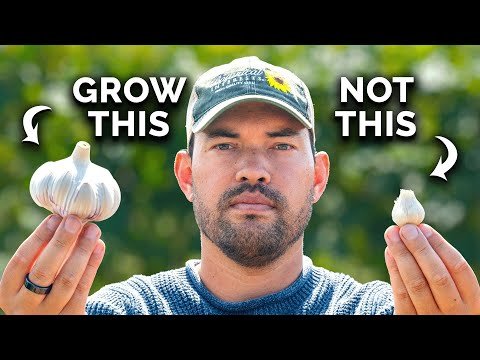Harvesting crops late is a major disappointment—you’ve left that single melon on the vine for weeks, only to discover it’s mushy inside after picking! This conundrum hits all gardeners from summer through fall as we try to maximize our harvests. Learning which crops you can pick early will help you avoid future heartaches.
For some crops, new science proves an early harvest is better than a later one. Look at tomatoes, for example. These fruits are still “vine-ripened” if you pick them when they change color and ripen them further indoors. Another plant, the leafy green Swiss chard, tastes better the earlier you pick it.
Another major reason to protect crops indoors is to ward off insects, mammals, and diseases that threaten ripening harvests. Pests like corn borers and leaf miners need fresh food to thrive—leaves, flowers, and fruits provide them with lots of nutrition. Keep these pest and disease issues away by picking these crops before other critters find them.
One technique that helps me catch ripe crops is to walk through my garden at least twice a week. Do the same, and you’ll see ripening fruits when they’re ready. Walkthroughs also help you identify pests or diseases before they roam out of control.
Without further ado, here are the 11 crops you’re harvesting too late!
Swiss Chard
Swiss chard tastes sweet when its young leaves are sprouting during cool weather. They turn thick and bitter with age and heat. Old leaves also attract pests like leafminers that eat holes in your chard. Keep eating new leaves, and your plant will keep growing baskets full of produce!
You’ll know chard is ready when the leaves are large with ruffles and bright green. Their stems turn darker with age, either yellow, orange, red, or pink. Some varieties have white stems like ‘Giant Fordhook.’ If you want variety, try a rainbow mix with all five colors!
Don’t worry if your chard is overripe—cook the greens, adding plenty of seasoning and acidity to mask the bitterness. Smoothies also hide the bitterness well with sugar from frozen fruit, dates, or yogurt. Juice the leaves with other fruits and veggies for a nutritious boost.
Summer Squash
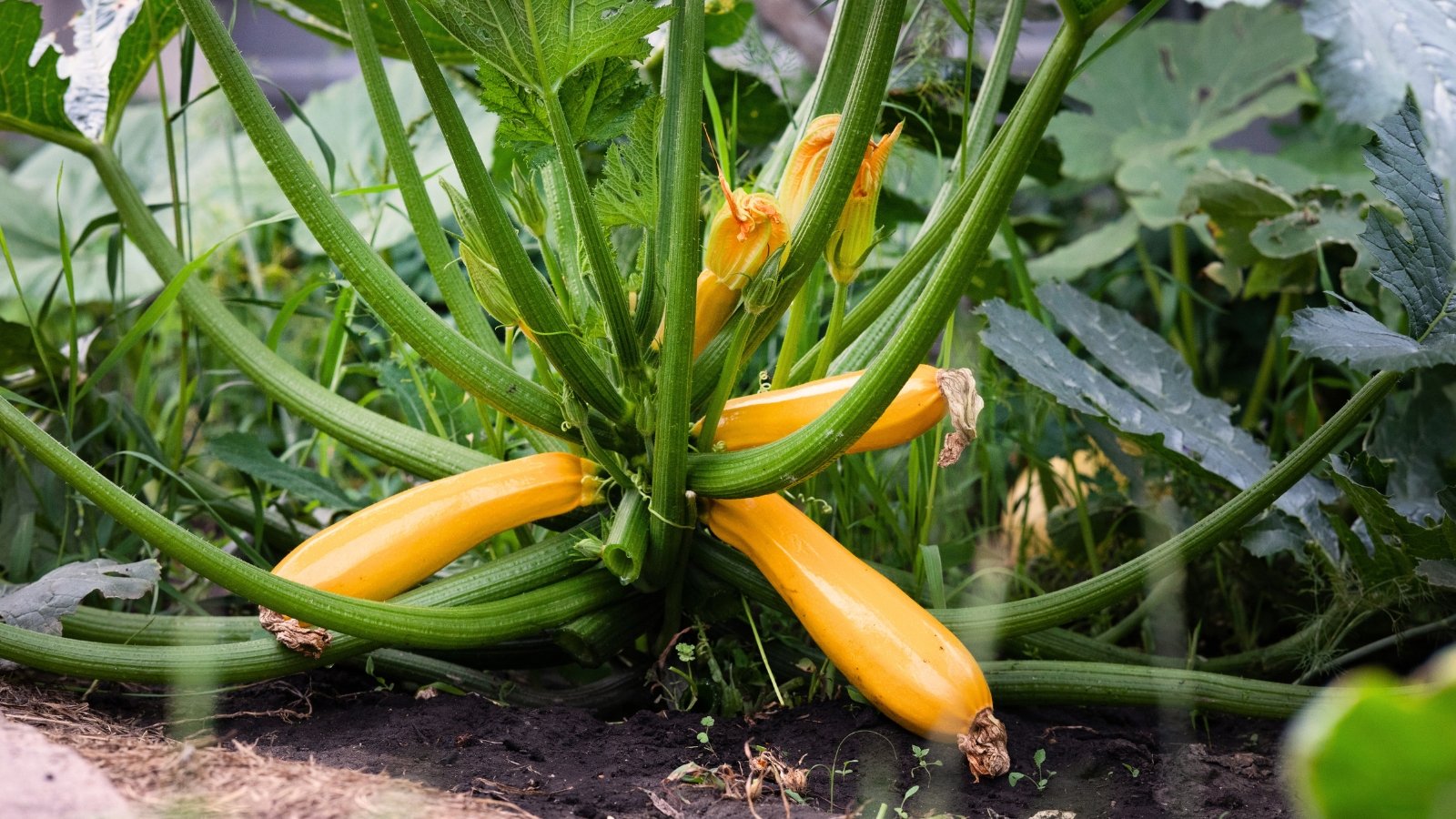
Summer squash grows delectable vegetables that are perfect for many recipes. The soft, fleshy texture occurs in crookneck, zucchini, and yellow skin types. Leave them on the vine too long, and these types become woody, seedy, and thick-skinned. You’ll want to harvest them when they’re large, soft, and have a dark color.
Although you can eat over-ripened summer squash, you might not enjoy it. Once overripe, it has seeds that you’ll bite into and skin that’s tough and chewy. If you want squash like the ones at the grocery store, you’ll want to harvest these vegetables often. Continuous harvesting also encourages the vine to produce more blossoms, meaning you have a higher chance of getting more squash!
Some types, like ‘Round Zucchini’, have round fruits instead of long ones. Pick them when they’re swelling and bulbous. A great way to know how ripe you like your vegetables is to try them at different stages. Eat early, normal, and late-ripening squash, and you’ll quickly discover the best!
Melon
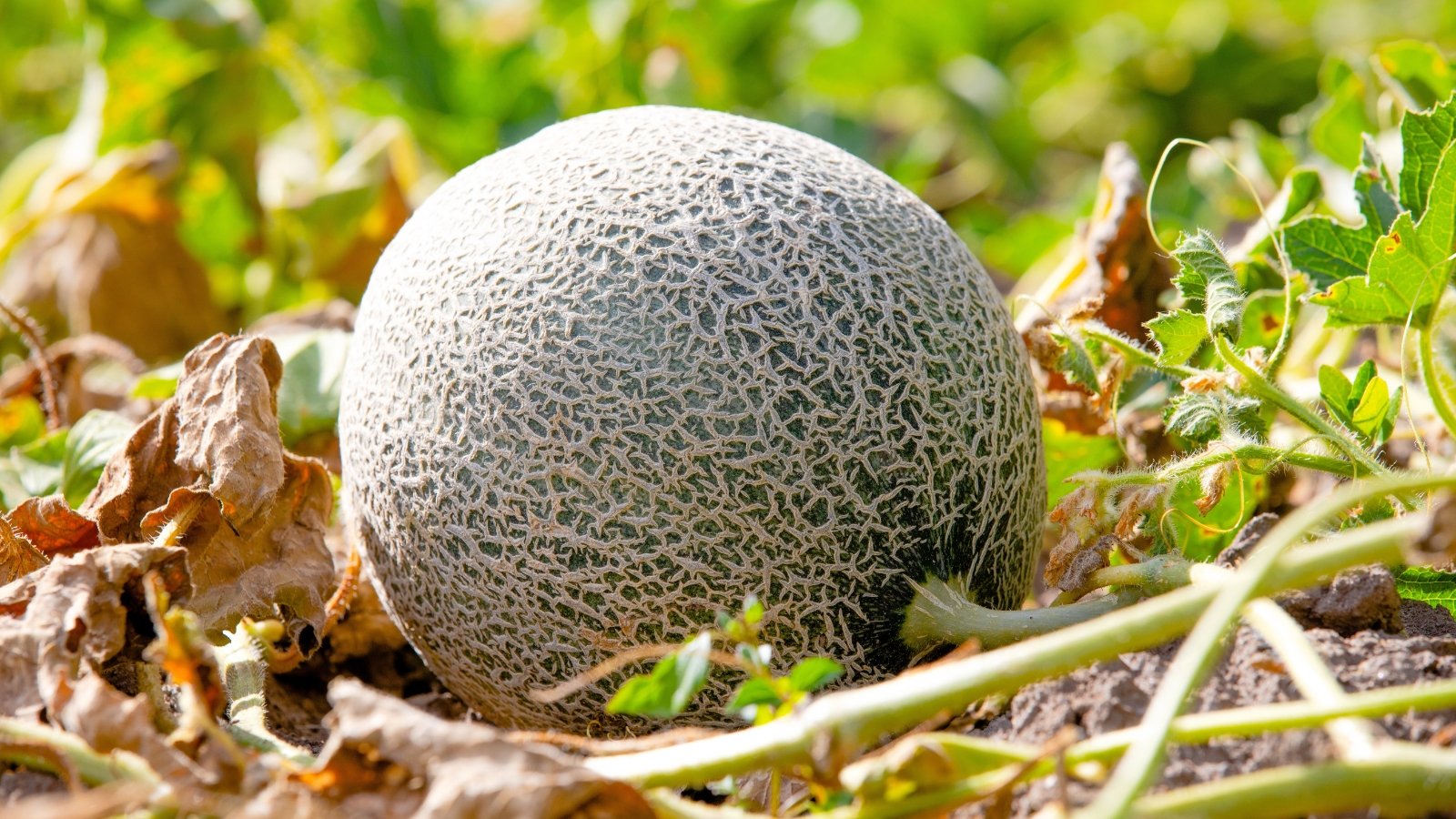
Deliciously nutritious, melons are ideal crops for sweet fruit lovers. This crop needs heat, sunlight, and moisture, making it perfect for gardeners in warm summer zones. Melons need some time to ripen properly on the vine, but if left too long, they’ll grow mealy, mushy, and rotten.
Muskmelons and late melons ripen differently. Muskmelons are easy since they tell you when they’re ready. Look for a crack near the stem and the melon, indicating the “slip stage.” The melon should slip right off the vine if you tug at it. Also, watch for brown netting on the skin and sniff to see if there’s a pleasant, sweet melon aroma. These three signs indicate proper ripeness.
Late melons are a bit different. They’ll give in to slight pressure at their blossom’s end. Their skin also matures from green into its final color. Cantaloupe late melon types like ‘Charentais’ shift from green to creamy white-yellow, indicating ripeness.
Watermelon
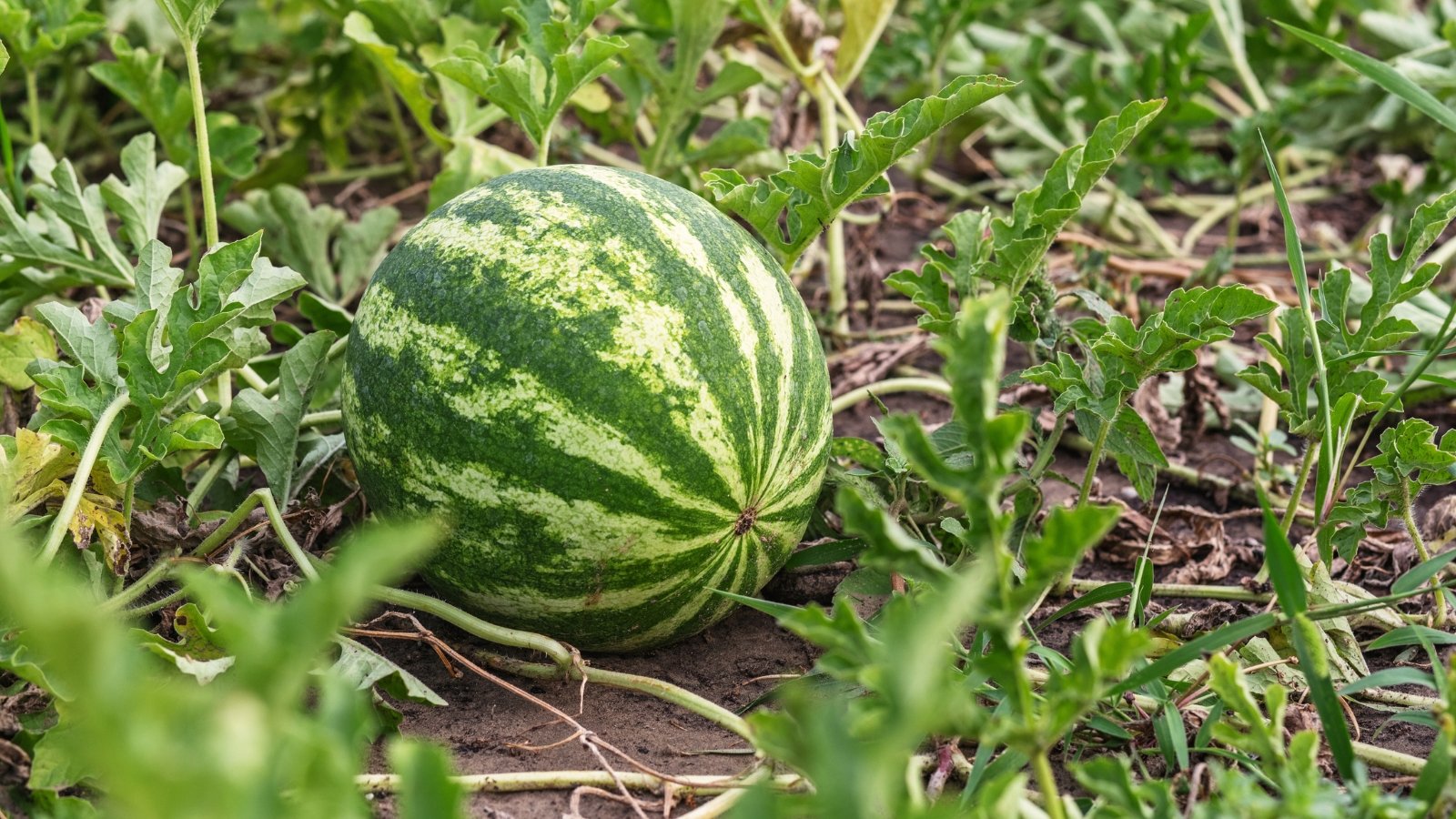
Slice into a watermelon to relieve summer’s heat. They taste best when crunchy, juicy, and firm; leave fruits on the vine too long, and they’ll grow mealy and mushy. Harvest watermelons earlier rather than later to avoid any rotten fruit heartaches.
You’ll know watermelons are ripe from a few cues:
- Where the melon rind touches the soil turns from green to light yellow.
- The rind turns from bright to dull green.
- The rind is firm and resistant to the touch.
- A green, wispy twine growing from the stem turns brown and crispy.
Most watermelons have blood-red flesh, although some fun types have different colors. Try ‘Mountain Sweet Yellow’ for sweet yellow fruit. ‘Sugar Baby’ grows an abundant crop of small watermelons—they’re personal size, and you can eat a whole one yourself!
Grape
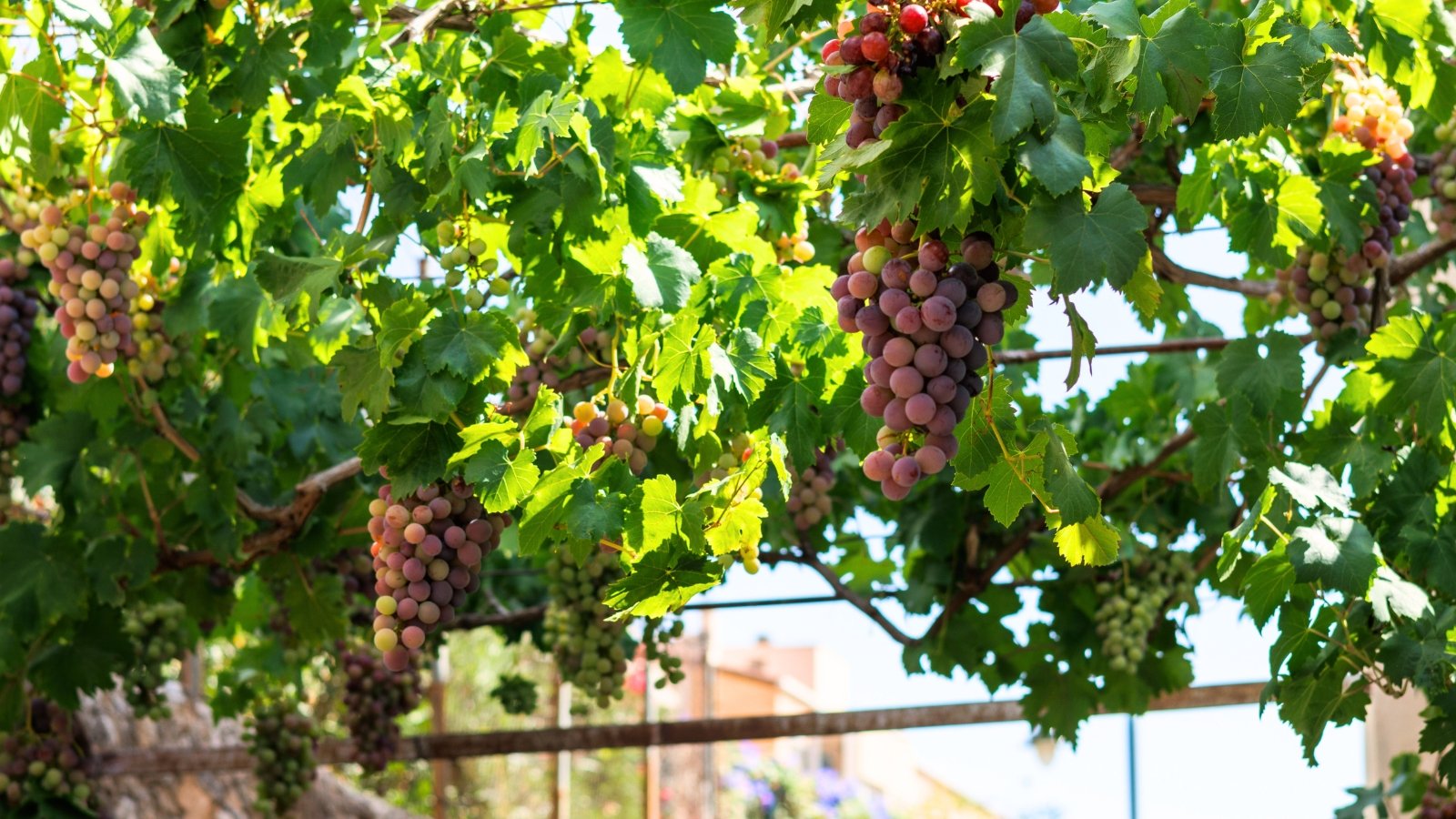
Whether growing table, wine, or jam grapes, you’ll want to harvest the fruits on time. Ripe grapes are sweet, delectable, and juicy. Some, like green table grapes, have a slight tartness to them. Overripe grapes lose sugar—they either rot or wither.
Turn slightly mushy grapes into jelly or jam preserves. They’re safe to eat so long as they haven’t started rotting. Harvest grapes when they turn deep purple or bright green with a white sheen on the skin. They’ll swell, change color, and turn a little soft as they ripen.
Cutting entire clusters at the stem helps your grapes last longer in your kitchen. This keeps air from getting inside the fruits, keeping them well-preserved. Grapes need long growing seasons without too much heat; try these vines throughout zones six through ten. In hot areas, grapes may suffer and show signs of premature rot or withering.
Tomato

Recent research says tomatoes are vine-ripened if you pick them at the breaker stage when there’s a 40-50% color change on fruits. This means you won’t have to battle the squirrels for your tasty tomato harvest; it also helps lower disease and pest infestations.
When ready, tie-dyed varieties will have half their color on their stripes, while plain red ones will be a bright orange color. After you pick them, they’ll ripen fully on your kitchen counter. Sunlight ripens them, so a sunny window is best. Once they reach peak ripeness, eat them or store them in the fridge for two weeks.
Beefsteak
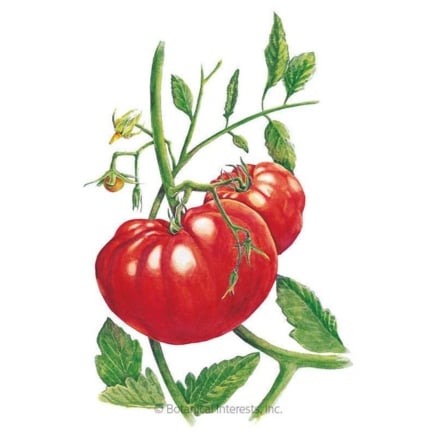
Beefsteak Pole Tomato Seeds
Sweetie
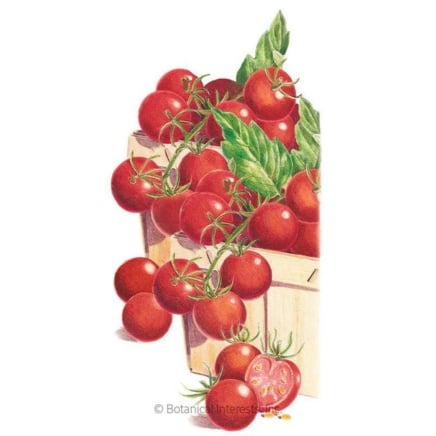
Sweetie Pole Cherry Tomato Seeds
Indigo Rose
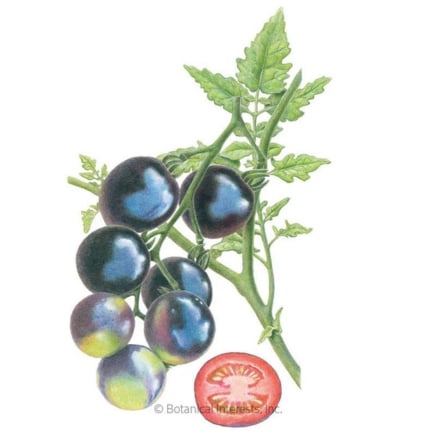
Indigo Rose Pole Cherry Tomato Seeds
It’s important to pick large, heirloom types like ‘Beefsteak’ in the breaker stage, as they’re more likely to rot on the vine than small fruiting types. For foolproof harvesting, grow cherry tomato varieties like ’Sweetie’ or the purple ‘Indigo Rose.’
Pea
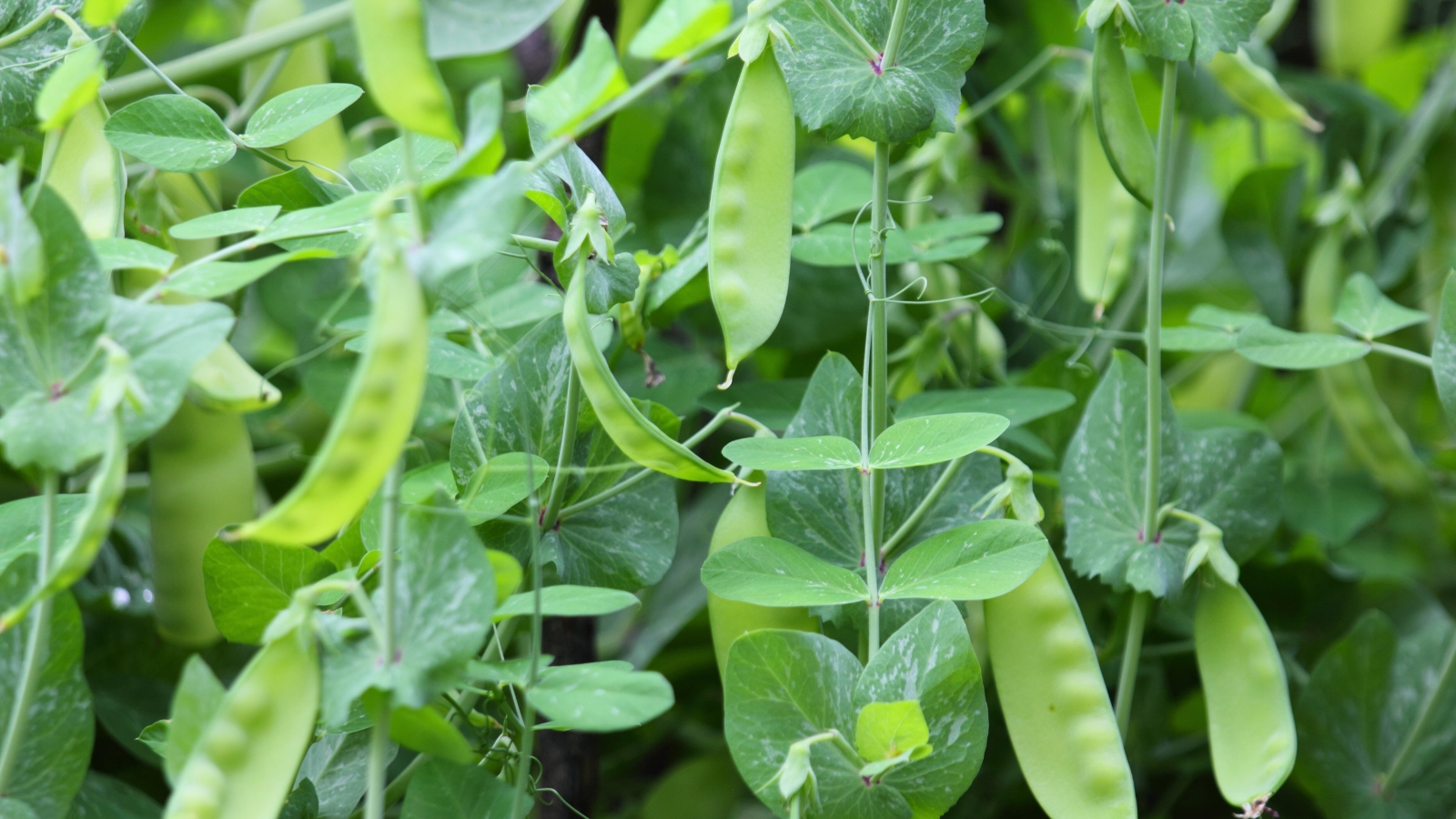
Peas are classic heirloom vegetables in backyard gardens. There are dozens of varieties available, with types available for everyone’s tastes. They fall into three categories: shelling, snow, and sugar snap peas. You’ll want to harvest each type at their peak ripeness stage before peas turn hard and the pods grow fibrous.
Shelling peas are the typical round peas you shell out of their pods. Sweet, juicy, and delicious, these peas make you work for their harvest. Pick types like ‘Progress #9’ when pods are fully swollen, about three weeks after flowering.
Snow peas grow edible pea pods with immature peas—pick them when pods fully form but are still flat, with small peas arranged inside. Sugar snap peas are like snow peas, except you harvest them a bit later with maturing peas. You can eat sugar snap peas whole, pod and all. Try ‘Sugar Daddy’ for excellent flavor with fiberless pods.
Bean
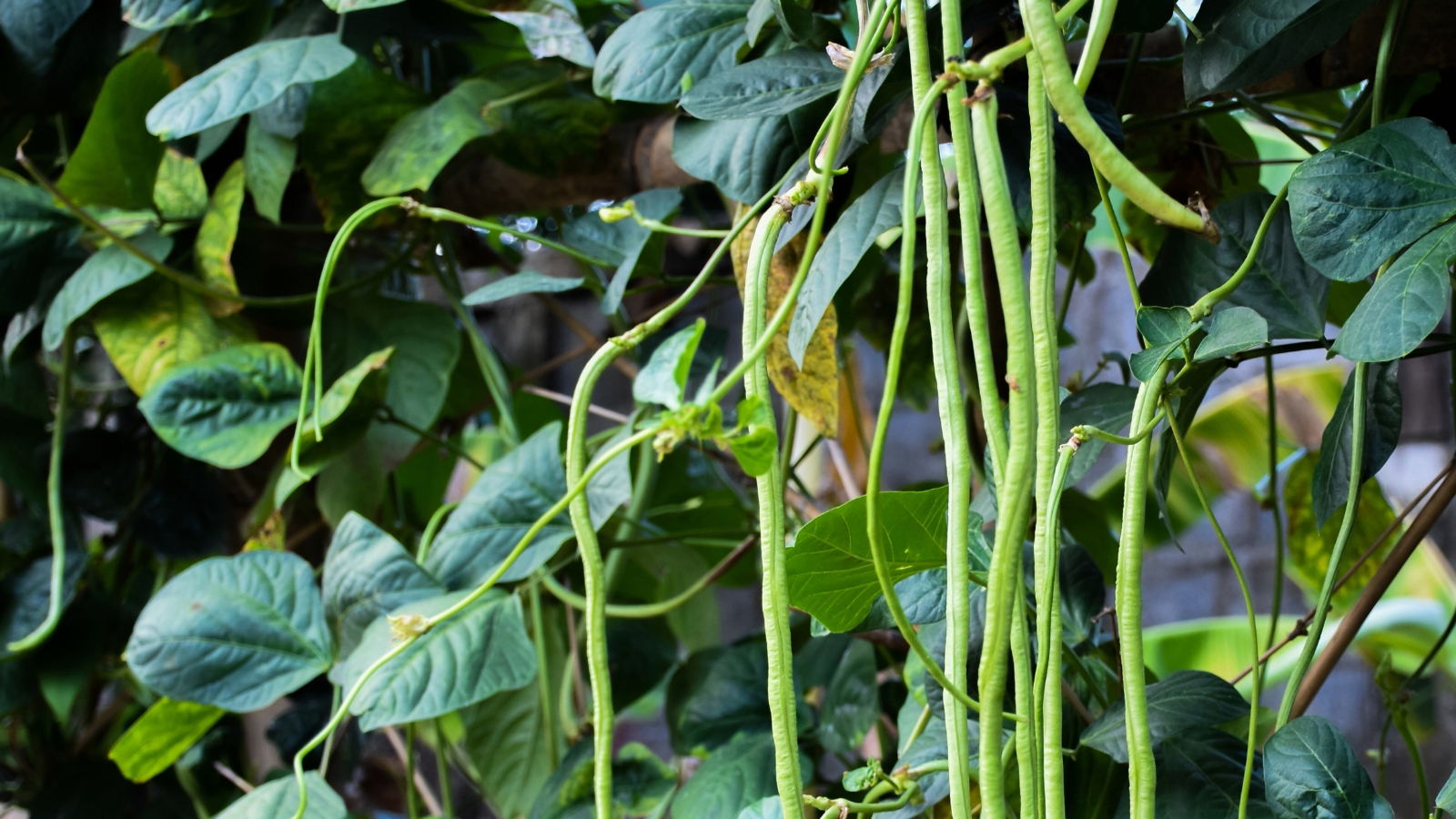
Beans, like peas, form edible seeds in pods. You can eat pole or bush-type beans fresh, shelled, or dry; you’ll want to harvest each at different stages.
For the freshest bean pods, harvest them when pods are fully formed, swelling, but still fleshy to the touch. They’ll snap cleanly in half, indicating peak ripeness. Shelling beans are delicious about 60 days after pods appear. Remove them from their pods and pop them in your mouth or recipes!
Dry beans take much longer—if you leave beans on the vine and think it’s too late, you can always store them for cooking later. Dry beans are ready when their pods are light brown and crispy. They’ll pop right out when you snap open the pods.
Blueberry

Blueberries, like grapes, taste best at peak ripeness. They’ll start shriveling or rotting if left on bushes too long. Blue-hued types are ripe when the berries are dark blue and plump. Some types, like ‘Pink Lemonade,’ sprout pink berries! Harvest them when they change from white to deep reddish pink. The berries have hints of citrus with a delicious blueberry flavor.
If berries are mushy but not rotting, they’re still tasty. They won’t store in your fridge well, but they’re great for fresh eating, preserves, or syrups. Use them quickly before they rot or shrivel, or freeze them and cook with them.
Watch out for birds, too, as they’ll target ripening berries on your bushes. The deep blue color stands out to them, and they swoop in when you least expect them to. Place nets over your crops to keep them safe, and harvest frequently so there’s less fruit to tempt the birds.
Cucumber
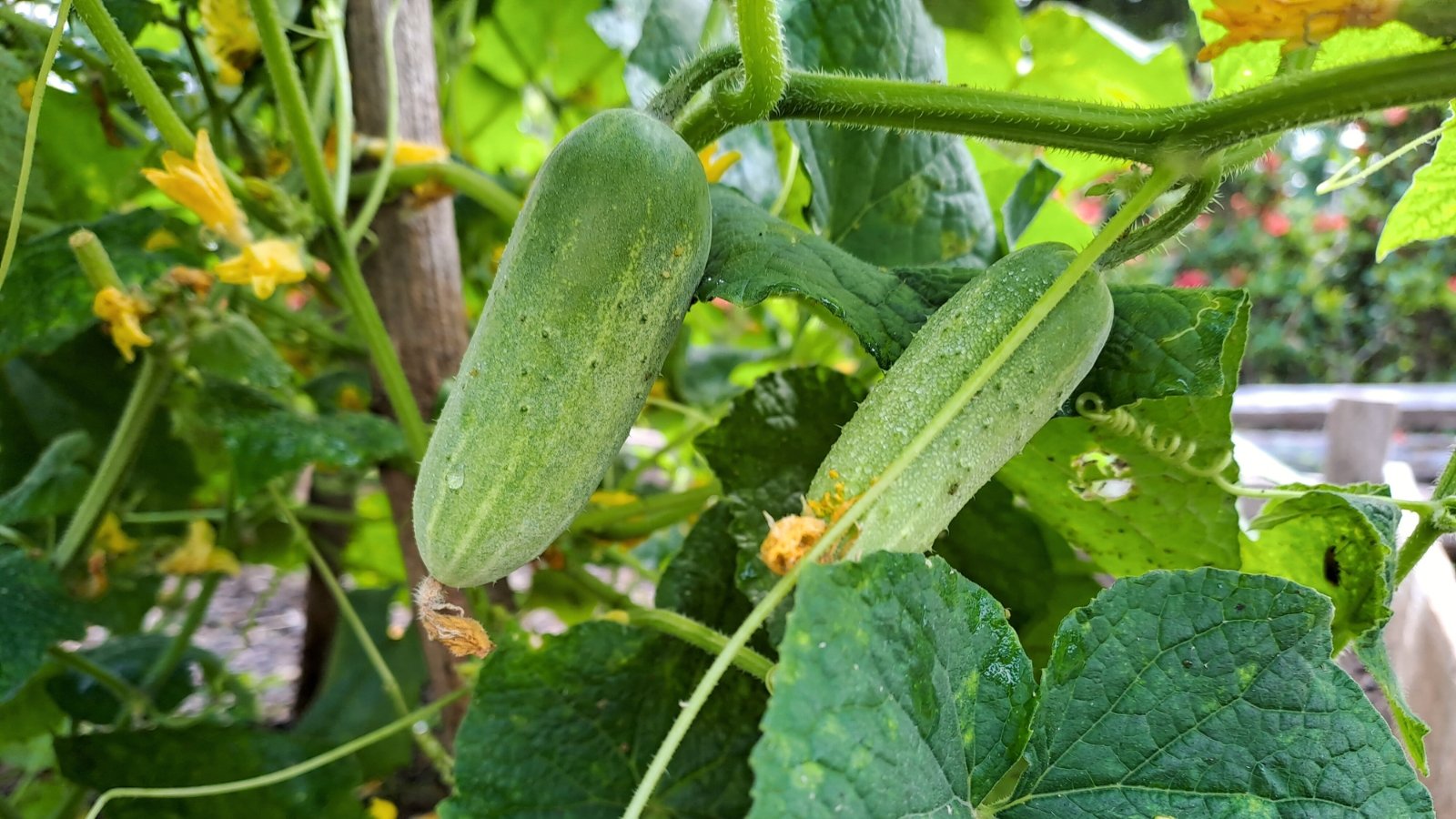
Cucumbers sprout off trailing vines that quickly cover bare soil and trellises. They grow seedy with thick skin if left on the vine too long. Harvest them on time—they’ll be refreshing, cool, and crunchy without inedible skin.
You’ll know they’re ready when they’re swollen and thick. Green types will look dark green, and other types, like ‘Lemon’ cucumbers, mature into yellow and orange hues.
Overripe cucumbers are still edible; they just need more preparation before you eat them. Cut the seeds out and peel the skin before serving them. Those gardeners with sensitive stomachs towards cucumbers should avoid eating overripe ones, especially ones that aren’t burpless.
Garlic
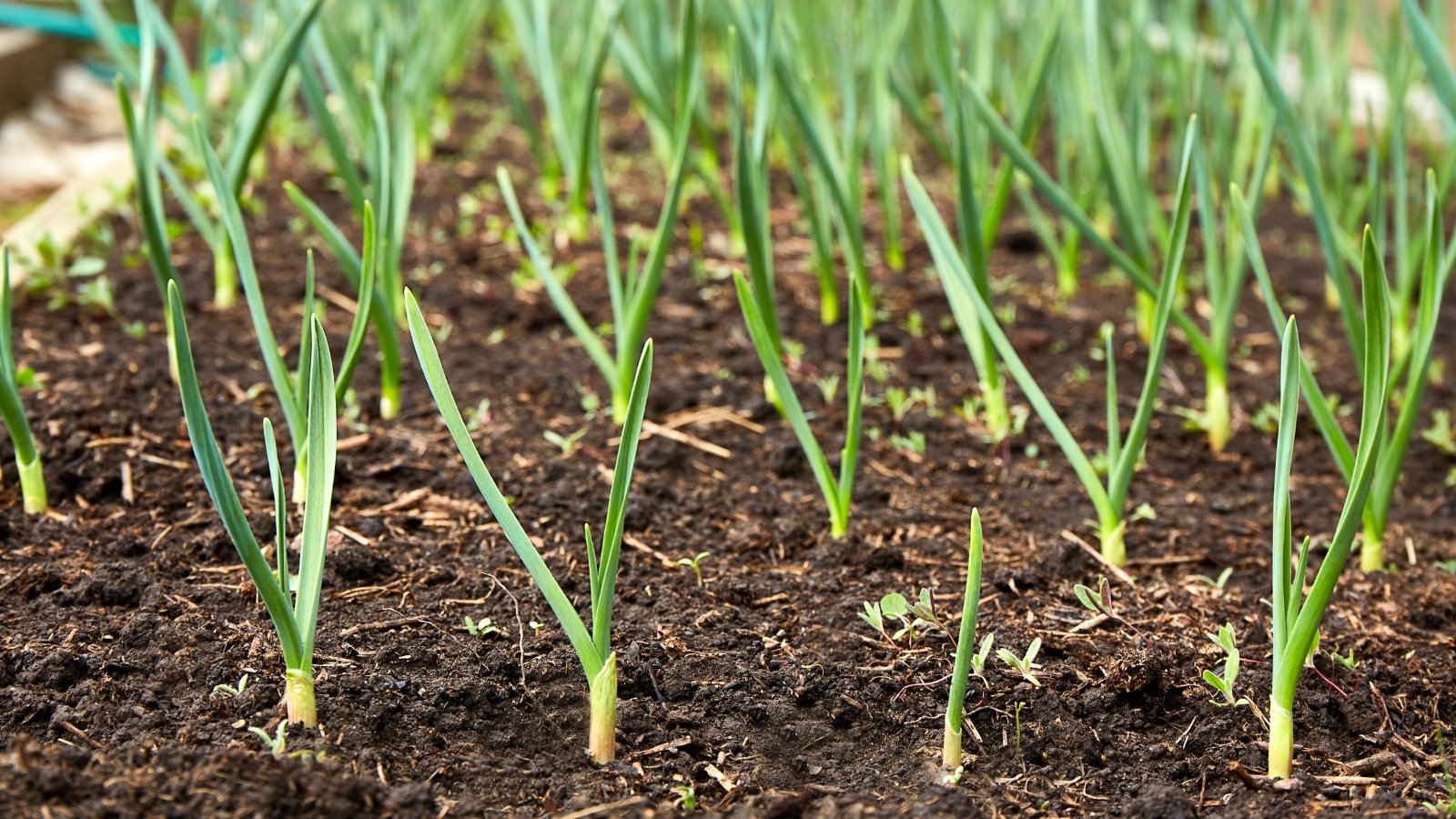
Softneck and hardneck garlic mature differently than most plants—they’ve found a way to grow during winter and summer! Cloves split underground, growing roots amidst winter frost. Then, summer temperatures trigger top growth and scape production. Cloves swell underground until bulbs form and dry.
You’ll want to harvest softneck and hardneck garlic using different strategies. If they overstay their welcome in soils, their papery skin decays, making long-term storage difficult. Harvest hardneck varieties when the bottom few leaves are brown, with green ones atop the stem. Harvest softneck types when their tops are leaning and mostly brown.
Overripe garlic is still edible; it just doesn’t store well in pantries or kitchens. Use the cloves quickly, or save them for planting in the fall. Next year, you’ll have a surplus as each clove matures into full bulbs!



